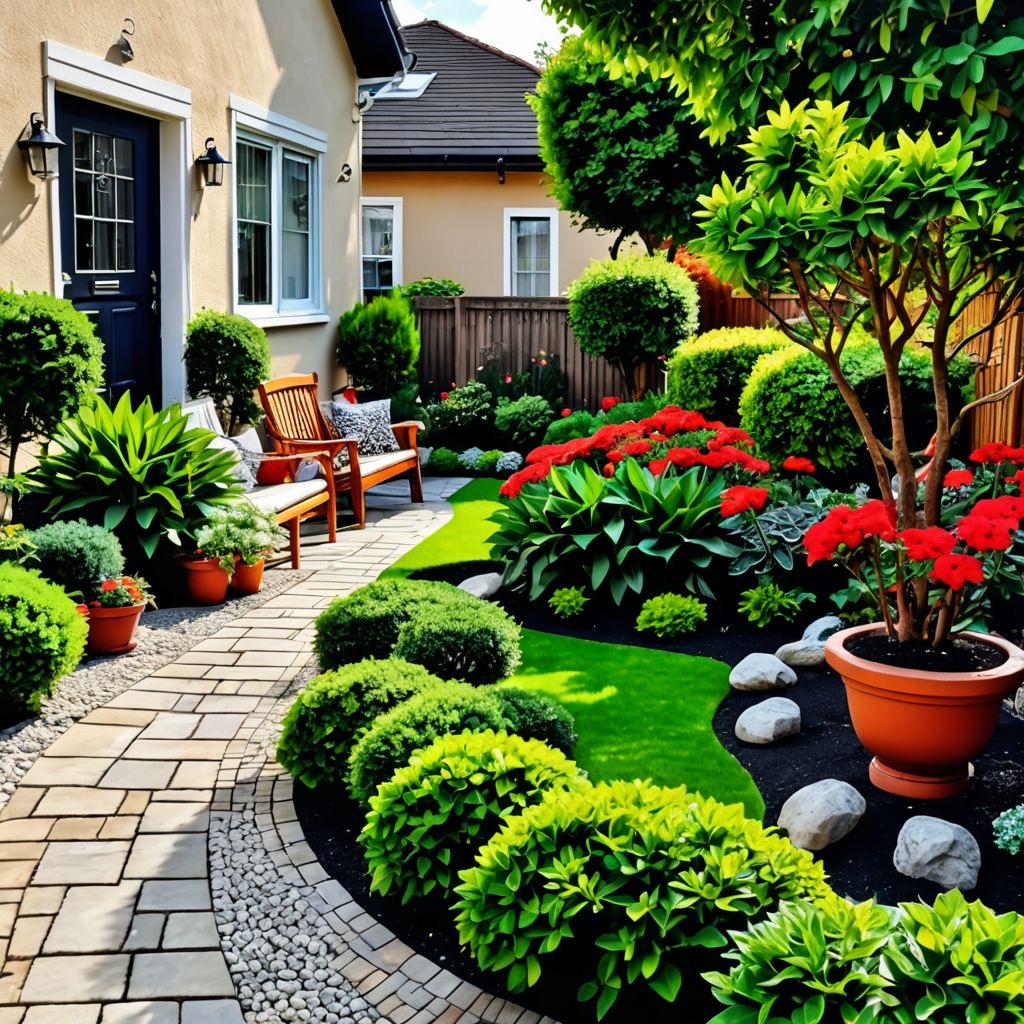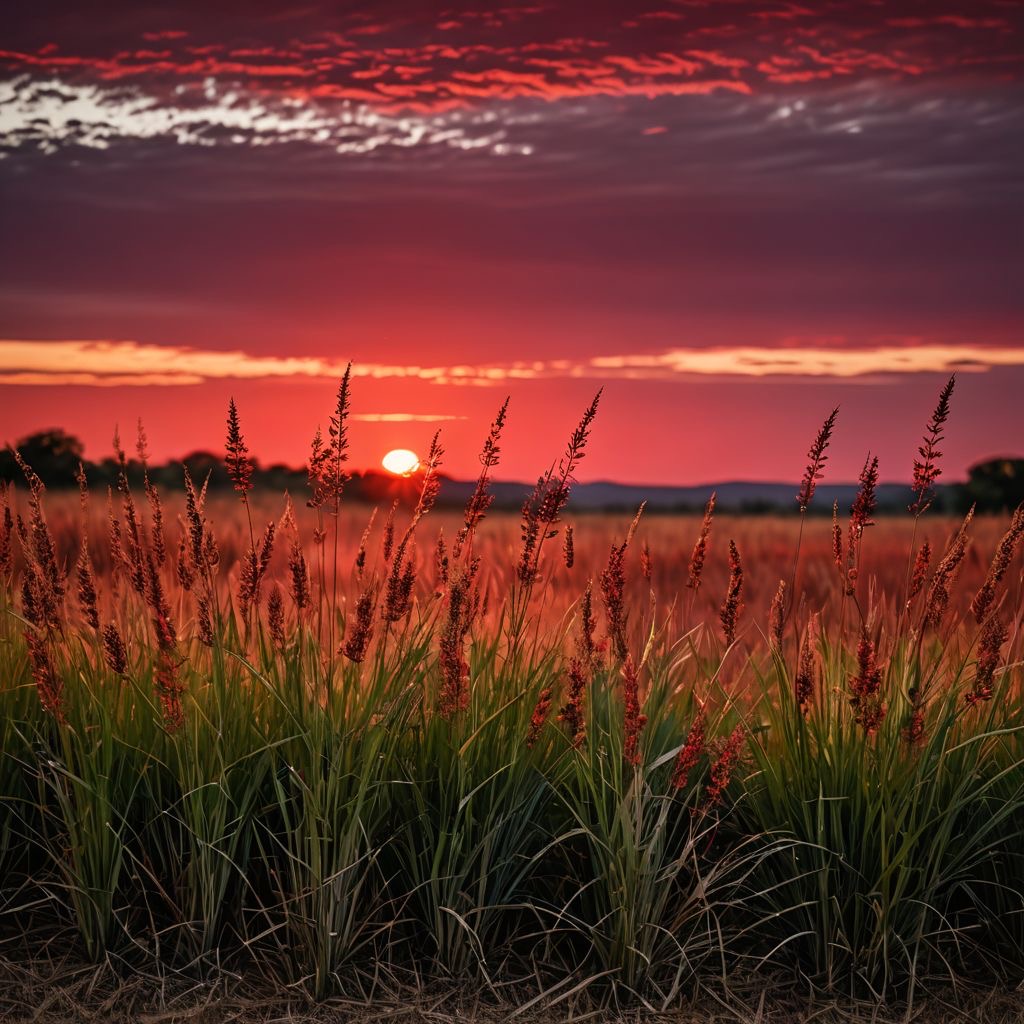
Table of Contents:
1. Introduction
2. Understanding the Connection Between Mindfulness and Lawn Care
- 2.1 What is Mindfulness?
- 2.2 Its Benefits of Mindfulness
3. Creating Your Serenity Lawn
- 3.1 Choosing the Right Grass
- 3.2 How to Design Your Yard for Mindfulness
- 3.3 Seasonal Care Essentials
4. Top Five Concerns About Lawn Care Winnipeg Homeowners are expressing in 2025
- 4.1 Weed Control Strategies
- 4.2 Managing Common Diseases
- 4.3 Optimal Watering Practices
- 4.4 Ideal Mowing Height and Frequency
- 4.5 Understanding Local Bylaws
5. Practical Tips
- 5.1 Making it a Meditative Practice
- 5.2 Incorporating Nature into Your Routine
6. Environmental Impacts
- 6.1 Eco-Friendly Practices
- 6.2 The Role of Native Plants
8. Conclusion
Introduction:
Imagine this: it’s early morning in Winnipeg, and you step outside into your backyard, greeted by the refreshing scent of dew-kissed grass. The sun begins its ascent, casting gentle rays that dance on your lawn. The world around you is quiet, soft chirping fills the air, and the gentle rustling of leaves beckons you to explore. In that moment, life slows down—your outdoor space transforms into a serene sanctuary—a refuge for mindfulness, bringing you peace amid the hustle and bustle of daily life.
For many homeowners, yard care prompts visions of laborious tasks: mowing, weeding, watering, and maintaining an evergreen aesthetic. However, what if this routine could be something more—a gateway to personal growth and mental wellness? In our increasingly hectic lives, with tight schedules and endless to-do lists, homeowners in Winnipeg often find themselves asking how they can achieve not only the picture-perfect yard but also the tranquility of mind cultivated in their outdoor spaces.
Blending mindfulness with yard care is not merely an innovative hobby; it’s a profoundly rewarding practice that has the ability to bring a sense of calm and joy. When approached with intention, caring for your yard can serve as a vital form of stress relief. Engaging in nurturing the environment allows us to momentarily escape the demands of daily life. Whether you’re pulling up stubborn weeds, planting vibrant flowers, or simply sitting quietly on the grass, these small yet meaningful moments can significantly enrich your mental and emotional well-being.
As studies have shown, spending time in nature has a positive impact on both mental health and physical well-being. A research study published in the "Journal of Environmental Psychology" demonstrated that individuals who spend time outdoors experience improved mood, cognitive function, and overall mental clarity. Nature has an incredible ability to soothe our souls, and the act of caring for your yard can amplify these benefits.
As we explore the concept of a "Serenity Lawn," you'll learn how integrating mindfulness into your routines can not only address common challenges faced by Winnipeg homeowners but also enhance personal wellness. Throughout this exploration, we will dig deep into the process of cultivating your own Serenity Lawn, which serves as an exquisite escape from the chaos of everyday life.

Along the way, we’ll address the key concerns of Winnipeg homeowners regarding yard care in 2025, providing practical maintenance tips, ecological benefits of mindful landscaping.
So, grab your favorite gardening tools and a refreshing drink; it's time to embark on a transformative journey of mindfulness!
2. Understanding the Connection Between Mindfulness and Yard Care:
2.1 What is Mindfulness?
Mindfulness is a mental practice that involves focusing one’s awareness on the present moment while accepting and acknowledging one’s thoughts, feelings, and surroundings without judgment. Originating from Buddhist traditions and now widely embraced in contemporary wellness practices, mindfulness teaches individuals to cultivate a state of awareness and presence.
When applied to yard care, mindfulness transforms simple upkeep activities into enriching experiences that foster connections with both the environment and oneself. It facilitates a deeper appreciation for the natural world—from the fluttering of bees to the colorful blooms of flowers—enhancing the joy of ordinary actions.
2.2 Benefits of Mindfulness
Integrating mindfulness into your lawn care practices provides numerous and varied benefits, making it an ideal approach for homeowners looking to cultivate peace, purpose, and connection in their lives:
1. Reducing Stress: Spending time in nature is a proven antidote to stress. Numerous studies indicate that being outdoors can significantly lower levels of cortisol (the primary stress hormone) while enhancing overall mental well-being.
2. Fostering Focus and Attention: Mindfulness promotes a heightened state of awareness that enhances concentration. When tending to your lawn, this focus allows you to immerse fully in the task at hand, resulting in a more fulfilling and enriching experience.
3. Encouraging Mental Clarity and Creativity: A serene environment encourages creativity. As you cultivate your lawn, you're likely to have ideas blossom—whether it’s a new approach to gardening or innovative solutions in your personal or professional sphere.
Contact us today for your free estimate.
4. Physical Health Benefits: Engaging in yard care serves as a form of low to moderate exercise, offering health benefits that include improved cardiovascular health, increased strength, and overall fitness. Incorporating physical activity into your outdoor routine equips you with both physical and mental vitality.
5. Creating Social Connections: Community engagement and collaboration often center around gardening and lawn care, fostering bonds between neighbors and friends. Engaging in community gardening initiatives creates a sense of belonging and shared accomplishment.
Collectively, these benefits emphasize how blending mindfulness with lawn care aligns not only with a healthier lawn but also nurtures your mental and physical well-being.
3. Creating Your Serenity Yard:
3.1 Choosing the Right Grass for Your Serenity Yard
The journey begins with careful consideration of the type of grass that thrives in Winnipeg’s unique climate, which entails cold winters and hot, humid summers. Selecting the right grass sets the foundation for a healthy and visually appealing lawn while minimizing maintenance.
Suitable Grass Varieties for Winnipeg:
- Kentucky Bluegrass: Recognized for its vibrant color and velvety texture, Kentucky bluegrass is one of the most popular turf grasses in Manitoba. It excels in cold temperatures and can withstand winter conditions with proper care.
- Perennial Ryegrass: This fast-germinating grass is ideal for quick patches and overseeding. It's fine texture and bright green hue contribute to an inviting yard, and it holds up well in shaded areas. Perennial ryegrass is also known for its tolerance to foot traffic.
- Fine Fescue: A mix of grasses, including creeping red fescue, chewings fescue, and hard fescue, offers excellent options for shady areas. These grasses are drought-resistant and require less maintenance compared to other varieties.
Selecting Grass Type Considerations:
When choosing the appropriate grass type, consider critical factors including your yard’s sunlight exposure, soil conditions, and usage (recreational, relaxation, or ornamental). Involve local environmental conditions to ensure the sustainability and health of your grass long-term.
3.2 How to Design Your Lawn for Mindfulness
Designing your lawn with intentionality helps create a space that encourages tranquility and connection with nature. Below are various design strategies to enrich the mindfulness of your green spaces:
Contact us today for your free estimate.
1. Pathways that Invite Exploration: Design winding paths using natural stones or mulch that create an inviting and exploratory experience. Curved lines create a natural flow and promote a more relaxing environment for introspection.

2. Water Features for Tranquility: The gentle sound of flowing water promotes relaxation and mindfulness. Consider adding a small pond, bubbling fountain, or birdbath as a focal point. These elements attract wildlife, encouraging a dynamic relationship with nature.

3. Create Diverse Zones: Separate your lawn into distinct areas designated for various purposes—such as spaces for quiet reflection, vegetable gardening, or group activities. Design each zone to accommodate its function while inviting exploration and interaction.
4. Emphasize Sensory Experiences: Incorporate plants that provide a variety of colors, textures, and scents. Fragrant herbs like rosemary or lavender can add olfactory richness, while colorful perennials create visual intrigue and seasonal interest.
5. Seasonal Considerations: Plan your lawn with a focus on seasonal cycles. Choose a variety of plants, including bulbs that bloom in spring, perennials for summer, and shrubs that provide attractive foliage in autumn. This diversity helps maintain visual interest throughout the year.

6. Use of Native Plants: Integrating native plants into your landscaping supports local biodiversity and requires less maintenance. Native plants are adapted to local climate conditions and resist pests and diseases, leading to a healthier landscape.

7. Relaxation Spaces: Designate areas with comfortable seating—hammocks or shaded lounge chairs are perfect for enjoying relaxation time outdoors. Surround these spaces with colorful blooms or greenery to create cozy nooks that invite mindfulness and leisure.
3.3 Seasonal Care Essentials
Your Serenity Lawn thrives on tailored attention throughout the seasons. Understanding the specifics of seasonal care allows you to keep your yard healthy and vibrant, while deepening your connection to nature along the way:
- Spring:
- Debris Cleanup: Remove dead leaves, sticks, and other debris. This practice is invigorating, signaling the start of a new growing season and setting a clean stage for your lawn.
- Aeration: Aerate the soil to improve drainage and allow nutrients and water to reach roots more effectively. Tools are available for rent, or consider hiring a local service for convenience.
- Fertilization: Apply organic fertilizers to rejuvenate the soil. Compost provides necessary nutrients while enriching the soil structure, supporting a diverse microbiome beneath the surface.
- Summer:
- Deep Watering: During hotter months, prioritize deep, infrequent watering. Incorporate around 1 to 1.5 inches of water weekly, focusing on early mornings to reduce evaporation.
- Regular Lawn Mowing: Maintain the lawn at proper height (2.5 to 3.5 inches) and mow with sharp blades. Mowing regularly increases grass density, reducing weeds and encouraging healthy growth.
- Weed Control: Proactively manage weed populations to minimize challenges. Regular care and maintenance can suffocate weeds before they take hold, preserving your lawn's health.
- Fall:
- Overseeding: Fall is an ideal time to overseed barren spots in your lawn. New shoots thrive in cooler weather, and timely rains can help newly sown seeds germinate effectively.
- Leaf Removal: Stay on top of fallen leaves by raking regularly to prevent mold and suffocation, which can block sunlight and nutrients from reaching your healthy grass.

- Winter Preparation: Before the snow arrives, fertilize your lawn, giving it the necessary nutrients to sustain winter dormancy. Core aeration may also be beneficial in preparing for winter conditions.
- Winter:
- Planning for the Year Ahead: Take this quieter time for reflection. Document what worked well in your yard care in the previous year and set goals for improvement in the upcoming season. Plan out what you would like to try new in terms of gardening and yard care strategies.
4. Top Five Yard Care Concerns for Winnipeg Homeowners in 2025:
As we journey toward a better understanding of yard care, it’s useful to know the most common concerns relevant to Winnipeg homeowners, especially in the context of grass and flowers, in 2025.
4.1 Weed Control Strategies
Weeds can quickly overtake your lawn if not managed properly. Homeowners are increasingly asking about environmentally friendly weed control methods. Here are effective strategies:
- Preventative Practices: A dense, healthy lawn naturally inhibits weed growth. Regular mowing and appropriate watering maintain growth. A study from the University of Minnesota shows that lawns actively maintained with correct cutting heights significantly reduce annual weed populations, thus allowing homeowners to focus on nurturing rather than battling weed growth.
- Organic Mulching: An additional layer of organic mulch around garden beds does a fantastic job inhibiting weed growth while conserving moisture in the soil. As it breaks down, it enriches the soil.
- Manual Weed Removal: Spend quality time in your lawn and hand-pull weeds. While tedious, this practice is physically engaging and offers impressive benefits. Best performed after a rain, pulling weeds while the soil is soft minimizes the risk of damaging surrounding grass roots.
- Natural Herbicides: Explore natural herbicide alternatives like vinegar, salt, or corn gluten meal. When used correctly, these solutions can minimize weed growth without harming beneficial insects or your soil health.
- Professional Consultation: Address persistent weed issues by seeking advice from local landscaping experts who can provide tailored solutions based on regional considerations and grass type.
4.2 Managing Common Lawn Diseases
Winnipeg's unique climate can sometimes give rise to lawn diseases. Here’s how to keep your grass healthy:
- Snow Mold Management: This common winter condition often develops under snow cover on damp grass. Proper drainage and regular aeration during the spring encourage good airflow and help mitigate this risk. Avoid watering right before snow falls to prevent creating conditions that promote mold.
- Dealing with Red Thread and Leaf Spot: These fungal diseases thrive in damp conditions during the growing season. Monitor your lawn and employ natural control methods through proper watering practices and well-balanced fertilizers that minimize risk of disease.
-Fungal Prevention Techniques: Adopt preventative maintenance techniques such as practicing good mowing and watering habits while avoiding compaction of lawn soil due to excess foot traffic.
- Get Educated: Reach out to the City of Winnipeg’s agricultural extension services to identify common lawn diseases, learn about management strategies, and find resources tailored to your area.
4.3 Optimal Watering Practices
Watering effectively is essential to maintaining a serene lawn. Winnipeg experiences varying precipitation patterns, leading homeowners to question optimal watering techniques.
- Check Soil Moisture: Monitor soil moisture levels using a soil moisture meter or simply sticking your finger into the ground to gauge whether it's time to water. If the soil feels dry at a depth of 2-3 inches, it is time to water. This not only conserves water but enables a stronger connection with your lawn.
- Deep Watering Approach:
Prioritize deep watering rather than frequent, shallow watering. Aim to deliver about 1 to 1.5 inches of water once or twice a week, focusing on early mornings to allow evaporation loss to be minimal.
- Rainwater Capture: Consider setting up rain barrels to collect rainwater, promoting eco-friendly practices that contribute to mindfulness. Rainwater harvesting conserves resources while nurturing your lawn with high-quality water.
- Installing Smart Irrigation Systems: If your lawn is expansive, investing in a smart irrigation system can optimize water usage, adjusting irrigation based on local weather conditions and keeping your lawn healthy.
4.4 Ideal Mowing Height and Frequency
Mowing is one of the more significant aspects of lawn care—a rhythmic task, perfect for practicing mindfulness.
- Optimal Height: For most cool-season grasses, maintaining a height of about 2.5 to 3.5 inches promotes root growth, reduces weed competition, and supports overall health. Healthy turf is typically less prone to pests and diseases, creating a vibrant ecosystem.
- Regular Frequency: On average, aim to mow once a week during the growing season. This consistent height maintenance ensures that your lawn flourishes and encourages healthier growth throughout the season, preserving the lawn's aesthetic appeal.
- Mindful Mowing: Make the most of mowing time by tuning into the environment. Listen closely to the sounds surrounding you—the rustle of leaves, distant birds chirping, or children playing nearby. This connection can enhance the experience of lawn care.
- Prevent Damage with Sharp Blades: Keeping your mower blades sharp facilitates clear, clean cuts while reducing stress on grass. Dull blades tear grass, creating wounds that may lead to disease or infestation.
4.5 Understanding Local Bylaws for Lawn Maintenance
Being aware of local bylaws can help create a harmonious relationship with neighbors and support community standards.
- Height Regulations: Familiarize yourself with regulations concerning maximum grass heights. Winnipeg bylaws outline acceptable heights to maintain property aesthetics, helping you avoid costly fines.
- Permissible Mowing Hours: Check your local ordinances for specified mowing times allowed to avoid fines or neighbor complaints. Respecting these local norms promotes community harmony.
- Addressing Non-compliance: If you encounter any issues with neighboring properties regarding lawn maintenance, approach the neighbors kindly and avoid confrontational expressions. Open communication fosters a more understanding community overall.
Read more about lawn care Winnipeg etiquette,
5. Practical Tips:
5.1 Making Yard Care a Meditative Practice
Transform your routine into a meditative experience. Through these mindful practices, you'll discover deeper connections to your environment:
- Engage in Focused Breathing: While mowing or watering, practice deep breathing. Inhale as you engage with your lawn, exhale as you appreciate the beauty around you. This technique of mindfully breathing can help alleviate anxiety and improve mental clarity.
- Consistent Sensory Engagement: Pay close attention to what you see, hear, smell, and feel. Immerse yourself in the vibrant hues of your landscape, the sound of the wind through leaves, and the warmth of sunlight on your skin. Engaging all your senses allows you to fully appreciate the delicate balance of your environment.
- Set a Schedule : Designate specific times for yard care to cultivate a sense of ritual. Treat this time as sacred and free from distractions. Focus on the task at hand and infuse your care routine with presence.
- Embrace Mindful Observation: Investing time in simply observing the life in your yard can be enriching. Look out for insects, birds, and trees; appreciate their interconnections in the ecosystem and recognize your role in this balance.
Contact us today for your free estimate.

5.2 Incorporating Nature into Your Lawn Care Routine
Your property can serve not only as a personal haven but as part of an interconnected ecosystem that thrives on balanced relationships. To nurture this connection:
- Encourage Wildlife Interactions: Install bird feeders, bat houses, or butterfly gardens to attract local wildlife. Observing these creatures allows you to cultivate appreciation for the intricate web of life that your lawn supports.
- Utilize Pollinator-Friendly Plants: Choose native plants like coneflower and asters that are known for attracting bees and butterflies. This connection not only supports biodiversity but also encourages mindfulness, as you witness the vital roles these creatures play in pollination.
- Prevent Pest Issues Naturally: Implement eco-friendly pest control methods by relying on beneficial insects, companion planting, and other organic deterrent strategies. This promotes ecological balance while enhancing your own experience of stewardship over your garden.
6. Environmental Impacts:
6.1 Eco-Friendly Practices
Adopting environmentally friendly practices not only benefits your grass but the broader ecosystem as well. Here’s how you can contribute to sustainability:
- Opt for Organic Fertilizers: Utilize natural compost instead of harmful synthetic fertilizers. Compost adds essential nutrients back into the soil without the adverse environmental effects associated with chemical runoff.
Contact us today for your free estimate.


